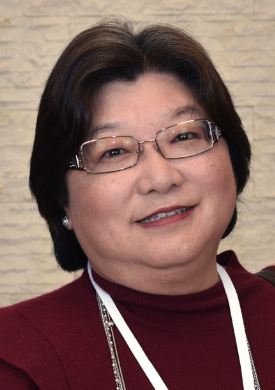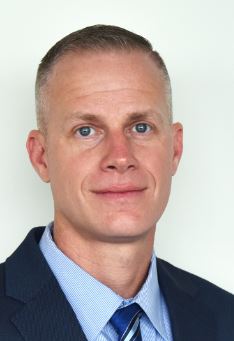How TissueTech Managed Growth, Virtual Trials, And Survived COVID-19

By Ed Miseta, Chief Editor, Clinical Leader

Since its inception in 1997, TissueTech has been a pioneer in the clinical application of human birth tissues. The company’s products have been used in more than 500,000 human transplants across multiple indications, under the regulatory classification of human cell and tissue products (HCT/Ps).
“Our mission is to develop and commercialize regenerative therapies derived from human birth tissue for patients with serious unmet clinical needs,” says Amy Tseng, CEO and co-founder of the company. “We want to be the industry leader in this segment while also making our trials patient centric. These two factors have been a key driver in our transition from a leader in the tissue space to an emerging biotech company.”
Tseng co-founded the company along with her husband, Scheffer C.G. Tseng, MD, PhD. He has spent 30 years researching and identifying the active biological components of human birth tissues to determine their therapeutic use. The company has also worked closely with U.S. Food and Drug Administration (FDA) to understand their views. Tseng credits her company’s early work as a factor that influenced its ability to rapidly advance Investigational New Drug programs.
Build Internal Capabilities
In July 2020 TissueTech announced the initiation of the first of two Phase 3 clinical trials of Cryopreserved Umbilical Cord TTAX01 to treat complex Wagner grade 3-4 diabetic foot ulcers. To complete those trials, the company knew it had to grow its internal capabilities. It did so by investing heavily in the expansion of its clinical and manufacturing programs.

Tommy Lee, VP of clinical operations for TissueTech, had the job of building the clinical operations team and the internal capabilities to advance the company’s pipeline. One challenge would be managing sites. He did not want to manage sites by performing distant oversight, instead preferring a more hands-on approach. To do so, Lee increased the internal team to 12 individuals to make themselves available to respond to physician questions and concerns in real time.
TissueTech is headquartered in Miami, FL, which is not exactly a hot bed of biotech activity. Still, the company was able to recruit local and nation-wide talents and created a virtual team from around the country. Lee notes the team was built with experienced biotech professionals, many of whom had experience with large pharma and biotech firms.
Manufacturing a New and Innovative Product
The processes required to manufacture TissueTech’s human birth tissue-based products was also so new, the company continues to learn about the processes as it moves forward. For that reason, the manufacturing is also performed in-house.
“This is a manufacturing process that is new and proprietary, which means we cannot outsource it to a CMO,” Tseng added. “We learn about the product by performing the work ourselves. If the product we generate is not what we expect, we can take those findings back to our development team, figure out the problem, and modify the process. Outsourcing the manufacturing would limit our ability to initiate new processes.”
TissueTech is currently producing a variety of human birth tissue products in different forms, which further complicates the manufacturing process. Some are in graft form while others are a micronized powder. Some go through terminal sterilization while others do not. The company is also looking at additional options for future product development.
Find the Right Technology Partner
Having the right technology in place is important for any clinical trial but finding the right vendor can be a challenge. Fortunately, Lee and members of his team had the benefit of performing due diligence with several technology companies while employed at other firms.
As a rule, Lee tends to shy away from large technology and service providers. “We are a small company,” he says. “We did not want to be a small company that is serviced by a large firm that is more focused on working with large pharma companies. We wanted a partner that we felt would be very responsive to our needs.”

“At the time we did not know we would soon be dealing with the COVID pandemic,” he states. “In retrospect, we are happy we made the decision we did. The technology allowed us to quickly pivot when the pandemic hit. We needed to change what we were doing, and we were able to leverage the technology and Medidata’s expertise to meet the needs of our patients and sites.”
TissueTech had a Phase 3 trial in severe diabetic foot ulcers that was due to start in March 2020. Those patients oftentimes face amputation and a subsequent mortality rate that can be as high as 50 percent in five years. Still, the pandemic forced TissueTech to delay the trial. Consequently, site visits were switched to a remote monitoring environment and risk-based monitoring was implemented – representing a first for the organization.
“In the past, we had patients making onsite visits every 12 weeks with 100 percent source data verification,” says Lee. “This shift represented a big change for us. Even site initiations are now conducted virtually. We were forced to adapt quickly and are leveraging the full platform technology and virtual oversight tools available to us.”
No Going Back
Another technology TissueTech is deploying is a device that allows patients to use an app to take a picture of their diabetic foot ulcer. A clinician can assess the progress of the patient virtually by viewing the image. The photo gives them a readout on the depth and volume of the wound in real time. This was one of several technologies that were critical to allow the trial to move forward seamlessly.
“Our industry can be conservative and risk-averse,” notes Lee. “What made TissueTech different from other companies is that we were not afraid to implement new technologies. Medidata had a business unit that specialized in introducing small-and mid-sized companies to virtual clinical development technologies, and that was an educational experience for us. They presented us with an innovation award in recognition of our successful migration to a unified data platform to address the complexity of our clinical trials and associated data handling.”
Now that COVID has caused some pharma companies to adopt patient-centric technologies, Lee believes there will be no going back. The pandemic has forced companies to peer into the future and reimagine how trials can be conducted. The pandemic will force every company to think differently about the future of clinical trials. Every company will have to adapt to the current situation if they want to move forward, and the only way to do that is by leveraging virtual tools.
Since TissueTech’s inception, the company has witnessed an explosion of growth in the human birth tissue industry. The industry now generates over $1 billion annually. Tseng believes the industry will continue to expand rapidly in the next few years and outpace the growth of the pharma industry.
“I believe we are redefining regenerative medicine,” adds Tseng. “When people think about regenerative medicine, most think about cell therapies or gene therapies. Our human birth tissue products create a regenerative environment for the patient’s OWN stem cells to revitalize. We do not need to perform a stem cell transplant. We restore the environment for the patient’s own cells to function again. That is a fundamental change, and we are just beginning. The future applications are enormous.”
